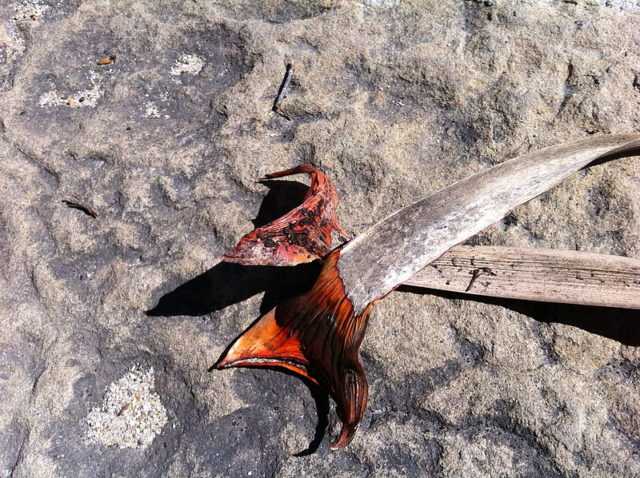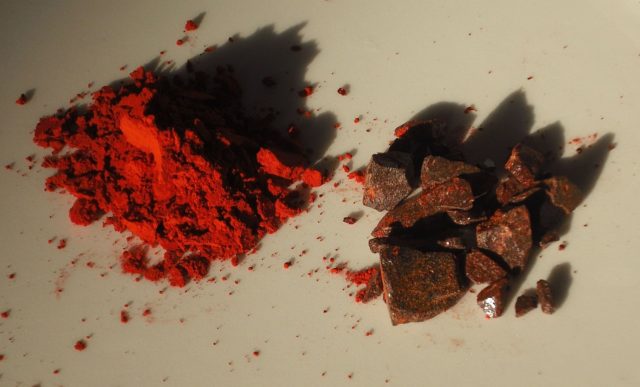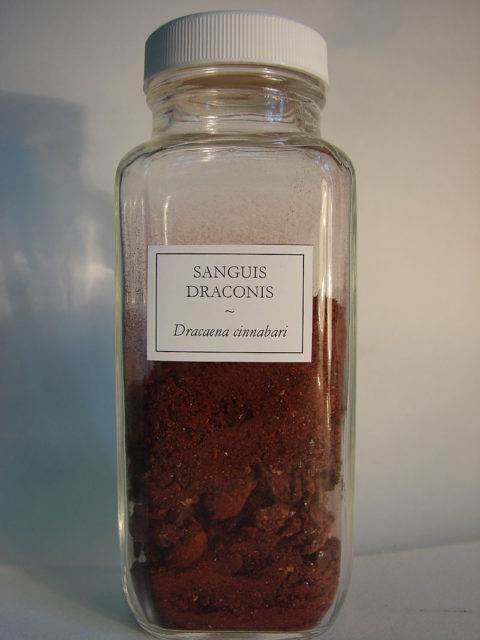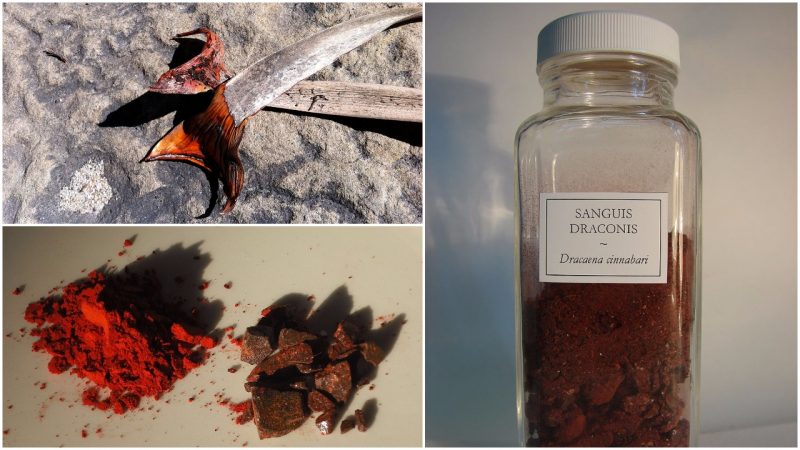The so-called modern pagans frequently come upon “dragon’s blood” as one of the ingredients needed for their rituals. The name of this substance signifies the blood of a mythical, flying creature that, according to many stories, performs wonders and heals even the sorest of wounds and most grievous illnesses. Surprisingly, dragon’s blood is not only “real” but also has been used since ancient times as varnish, medicine, incense, and dye.
In some medieval encyclopedias, dragon’s blood is mentioned as the actual blood of dragons or elephants who perished in mortal combat.
In reality, dragon’s blood is actually a resin harvested from various plant species such as Croton, Dracaena, Daemonorops, Calamus rotang, and Pterocarpus. Its main feature is the red pigment that lends it the name dragon’s blood. According to the book “Modern Herbal” by Maud Grieve, published in 1931, “The berries are the size of a cherry and pointed. When ripe they are covered with a reddish, resinous substance which is separated in several ways, the most satisfactory being by steaming, or by shaking or rubbing in coarse, canvas bags. An inferior kind is obtained by boiling the fruits to obtain a decoction after they have undergone the second process. The product may come to market in beads, joined as if forming a necklace, and covered with leaves … or in small, round sticks about 18 inches long, packed in leaves and strips of cane. Other varieties are found in irregular lumps, or in a reddish powder. They are known as lump, stick, reed, tear, or saucer Dragon’s Blood.”

Historical records of the Romans and Greeks also note Dracaena cinnabari, a byproduct of the cinnabar tree that was found on an island in the Indian Ocean. The resin of Dracaena species, the “authentic” dragon’s blood, and the extremely poisonous mineral cinnabar (mercury sulfide) were often confused by the ancient Romans. The types of dragon’s blood derived from different species were also hardly distinguished from one another in ancient China.

The pigment in the tree’s gum has numerous uses, including as a dye and also as a colorant in cosmetics. Some women used the powder in a ritual that was supposed to attract a marriage proposal. They would write their lover’s name on a tiny piece of paper, then their own name on the top, sprinkle it with some dragon’s blood, and fold it. Afterwards, they threw it onto burning charcoal while saying a prayer.

In the 18th century, dragon’s blood was used as a varnish for Italian violin makers. Moreover, there was a recipe for a toothpaste containing dragon’s blood. In India, it has been used in ceremonies for face painting or as a red varnish for wooden furniture. Another use of it was coloring the surface of writing paper, especially the decorative type that was used for weddings and during Chinese New Year.
In New Orleans voodoo and American hoodoo folk magic, it is used for attracting money or love and often as an incense that cleanses space and casts away negative energies. It is also added to ink to make “dragon’s blood ink,” a substance used to inscribe magical seals and talismans.

Dragon’s blood from Dracaena cinnabari. Sanguis draconis, Dracaena cinnabari. Author: Maša Sinreih in Valentina Vivod. CC BY-SA 3.0
The vibrant red color explains why dragon’s blood refers to the element of fire, and it’s often used in rituals that involve fire, heat, or power. In some traditions of folk magic, the resin is blended until it turns to oil. The oil of dragon’s blood is then applied to one’s wrists in order to strengthen power.
In traditional medicine, dragon’s blood is used as a wash that can heal wounds or as a powder that blocks bleeding. Also, it is mentioned as a remedy for chest pains, post-partum bleeding, traumas, and excessively heavy menstrual cycles.
Yes, the dragon keeps very busy.
